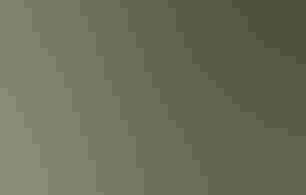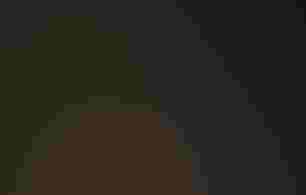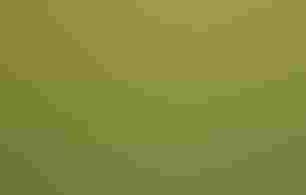









In many ways every child is born a scientist—exploring their world, leading small experiments, asking questions, searching for answers. That innate curiosity and drive to inquiry is what Rachel Carson, the groundbreaking conservationist and author, called a sense of wonder. “A child’s world is fresh and new and beautiful, full of wonder and excitement,” she wrote. © “It is our misfortune that for most of us that clear-eyed vision, that true instinct for what is beautiful and awe-inspiring, is dimmed and even lost before we reach adulthood.”
ɋThis page aims to bring together activities from across Audubon’s national network of environmental educators, including the classroom curriculum Audubon Adventures, plus related DIY activities and content from Audubon’s editors. These activities can be done at home or in a yard or park, sometimes with the help of a computer. The goal isn’t to teach a child how to name and identify bird species, but rather to give them space to explore and feel connected to the natural world. If you’re a parent or caretaker, that means you don’t need to worry about your own knowledge of birds or plants. All you need to be is a companion to your child’s curiosity.
“If a child is to keep their inborn sense of wonder, they need the companionship of at least one adult who can share it, rediscovering with them the joy, excitement, and mystery of the world we live in,” Rachel Carson wrote in 1956. M We hope these lessons, which we’ll refresh each week with a new theme, will help you you find awe and inspiration in nature together. Disponible en Español
Get to know birds

Do you love animals, including wildlife? Then you just might want to get to know the wildlife you probably see every day: birds. There are many special things about birds. For one, they have feathers. No other animal has them. Birds come in an amazing variety of colors and sizes. That’s another special thing about birds—diversity.
How do you describe a bird? You may describe its colors and color pattern, the size and shape of the beak, or what its legs and feet look like. These are called field marks. Field marks are clues that people use to help them identify a bird. When you become comfortable recognizing field mark clues, you can begin to identify specific kinds of birds. So, grab a field guide or open an app, or go outside if you can. When you spot a bird, take a closer look.
You don’t need to go outside to get to know birds: Try drawing them instead. David Sibley, the ornithologist who wrote and illustrated The Sibley Guide to Birds, created a video for Audubon for Kids that shows how to sketch a Black-capped Chickadee—a teeny, acrobatic songbird. Get out a piece of paper and a pencil or crayon and try it yourself! Share your art on Instagram: #SketchWithSibley @audubonsociety.
a characteristic that helps identify a bird, such as color, color pattern, size, tail shape, leg length, size and shape of beak, kind of feet, and so on
wild animals living in nature
a group of plants or animals that share certain characteristics and are able to breed and reproduce their own kind
the condition of having many different kinds of things, such as people, plants, and animals
the hard, horny part of a bird’s mouth; also called bill
for birds, to settle down to rest or sleep; a place where birds settle down to rest or sleep

With this DIY bird feeder, you can welcome more birds into your backyard by repurposing your empty milk cartons. This quick and easy project is fun for you and will provide a good food source for your avian visitors.

After learning some tips about how birds are named, kids use their imaginations to "invent" a new bird, draw it, and give it a name.

You can learn a lot from watching pigeons! After observing pigeons from a window, park bench, or using online videos, kids use a checklist to spot different behaviors and color morphs.
All about owls

When it comes to birds, owls are big attention-getters, with their huge eyes, razor-sharp beak, and powerful feet with piercing talons. Their haunting calls echoing through the dark give us chills. Owls are also symbols of wisdom, making them popular characters in ancient myths and modern stories.
Owls are categorized as raptors, or birds of prey. They are predators, and the animals they catch and feed on are prey. In other words, they’re hunters. Their diets range from insects and worms to small mammals, reptiles, fish, crustaceans, and even other birds. Like other raptors—eagles, hawks, falcons, kites—owls grab their prey with their feet. Their hunting skills are enhanced by their keen eyesight, excellent hearing, and special feathers on the edges of their wings for flying silently.

After looking at pictures of North American owls, kids learn the differences between five kinds of owl by playfully probing their sounds and size.

After reading a story about a Burrowing Owl’s adventures, kids write and illustrate their own stories about an owl that comes into their lives.

With a whimsical idea and a dollop of paint, your child can create handprint owls, flamingos, or any other feathered favorite.
The John James Audubon Center at Mill Grove is home to fascinating resident owls. These birds are badly injured and unable to survive in the wild, so now they are part of Audubon Pennsylvania's education program. Get to know the owls with Audubon staffers Carrie Barron and Christine Lin in this video series, starting with this episode on owl anatomy. Watch Episode 1 to see an Eastern Screech Owl eat a mouse. Our hosts dissect an owl pellet in Episode 2.

Unravel a bit of the mystery shrouding these amazing birds of prey.

These owls may wear the same game face, but when it comes to personality, they’re as different as day and night.
Quiz yourself to learn your North American owl species by sight!
Click on an owl’s photo to see the species name on the back.
Burrowing Owl
Barred Owl
Barn Owl
Eastern Screech-Owl
Great Gray Owl
Snowy Owl
Great Horned Owl
Northern Saw-whet Owl
You don’t need to go outside to get to know birds: Try drawing them instead. David Sibley, the ornithologist who wrote and illustrated The Sibley Guide to Birds, created a video for Audubon for Kids that shows how to sketch an Eastern Screech-Owl. Get out a piece of paper and a pencil or crayon and try it yourself! Share your art on Instagram: #SketchWithSibley @audubonsociety.
Birds on the Move

Every year in spring and fall, millions of birds migrate, taking to the air to travel between their summer and winter homes. It’s a relatively short trip for some. Others travel thousands of miles, sometimes flying for days without landing. Different birds use different skills to get where they need to go. Some learn from their parents. Others use landmarks, sound, the sun and stars, or Earth’s magnetic field to find their way.
No matter where you live, birds migrate through or to your neighborhood. They may stay for a short time, stopping to rest and refuel on their way to someplace else. Or your neighborhood may be the destination for certain species, where they will nest and raise their young in spring and summer, or pass the cold months of fall and winter in a warmer climate.

Kids play an interactive game following the migration journeys of five species. Then, they write their own migration story.

After learning which migratory flyway they live in, kids create invitations that promote the local area as a good place for birds to stop or stay.

Help your feathered friends through their journey with an easy DIY project.

Create a fun pair of paper binoculars using materials from around the house. Now your child is ready for a birding adventure!
to relocate from one habitat to another in a regular cycle
the route birds follow as they migrate
a place in which an organism is normally able to find the resources it needs for survival
a place where migratory animals spend time during their migration
to find the way from one place to another
the natural behavior of an animal in response to environmental factors or other influences

From a tiny bird that makes an epic trek to mileage measured in trips to the moon, these are impressive birds.

Kids are natural explorers. Here are some tips and games to encourage that impulse from Audubon experts.
You don’t need to go outside to get to know birds: Try drawing them instead. David Sibley, the ornithologist who wrote and illustrated The Sibley Guide to Birds, created a video for Audubon for Kids that shows how to sketch an Arctic Tern. Get out a piece of paper and a pencil or crayon and try it yourself! Share your art on Instagram: #SketchWithSibley @audubonsociety.
Plants Are for the Birds!

A healthy habitat with native trees and plants—the ones that have evolved in that place along with the other living things there—is key to making birds feel at home. Plants provide protection from weather and predators, and offer places to roost at night. Seeds, nuts, fruit, and flower nectar are food sources all year long. And when it comes time to lay eggs, birds use trees and plants to build nests—and hide them, too.
But there’s more! Trees host the protein-rich insects that baby birds need to grow. Science has shown that native trees and plants support far more insects than non-native species. Bottom line, a healthy habitat dominated by native trees and other plants means birds and other wildlife can thrive, and the same is true for another organism: human beings.

Play a classic game of “I Spy,” with a twist. Look for plants and animals inside and outside the home.

Kids make a seed-starting pot out of paper, then plant seeds, see them sprout, and transplant them to a bigger pot or the ground.
Dark-eyed Junco: Searches the ground for insects in summer and seeds in winter.
Northern Cardinal: Eats most kinds of seeds, insects, berries, and wild fruit—and even flowers!
Blue Jay: Eats many nuts, seeds, fruit, and insects. Stores acorns in holes in the ground.
Yellow-bellied Sapsucker: Pecks at tree bark to feed on sap. Also finds ants and other insects.
Lesser Goldfinch: Mostly seeds, especially from the daisy family. Eats a few insects.
Mountain Chickadee: Hunts for insects high in treetops. Also eats seeds and berries.
Yellow-rumped Warbler: Seeks insects in foliage or catches them in midair. Eats berries, too.
Baltimore Oriole: Insects, berries, nectar. Will even eat the hairy caterpillars!

This year's Audubon Photography Awards introduced a new category that requires entrants to know their fauna and their flora.

With this simple DIY, you can spread the power of native plants far and wide.
You don’t need to go outside to get to know birds: Try drawing them instead. David Sibley, the ornithologist who wrote and illustrated The Sibley Guide to Birds, created a video for Audubon for Kids that shows how to sketch an American Goldfinch. Get out a piece of paper and a pencil or crayon and try it yourself! Share your art on Instagram: #SketchWithSibley @audubonsociety.
Hooray for Hummingbirds!

It’s like a fast-moving, flying, whirring, shimmering jewel. What could it be? A hummingbird! When you see a hummingbird, you know instantly what it is.
Hummingbirds are flying acrobats. They can hover in one spot, fly forward and backwards, side to side, straight up and down, and even upside-down.
Hummingbirds are small. The Bee Hummingbird is the smallest bird in the world—about two inches from bill to tail.
Hummingbirds hum . . . sort of. That buzzy/hummy sound you hear when a hummingbird flies by comes from its rapidly beating wings—between 20 and almost 100 times per second.
In this video, filmed at Strawberry Plains Audubon Center in Holly Springs, Mississippi, hummingbirds flit around and drink from a nectar feeder. Put on some headphones or turn up the volume and take a few minutes to relax and enjoy the sounds of hummingbirds!

In this activity, kids pretend to be a hummingbird visiting flowers to drink nectar—and accidentally become pollinators!

In this activity, kids see if they can flap their arms as fast as a hummingbird flaps its wings. All you need is a stopwatch.

In a few easy steps, you can bring these nectar-loving birds to your feeder.
Allen's Hummingbird
Calliope Hummingbird
Ruby-throated Hummingbird
Costa's Hummingbird
Black-chinned Hummingbird
Anna's Hummingbird
Rufous Hummingbird
Broadtailed Hummingbird
About 1 flap per second

Meet the "puffleg” birds of the Latin American tropics, covered in feathers all the way down.
You don’t need to go outside to get to know birds: Try drawing them instead. David Sibley, the ornithologist who wrote and illustrated The Sibley Guide to Birds, created a video for Audubon for Kids that shows how to sketch a Ruby-throated Hummingbird.. Get out a piece of paper and a pencil or crayon and try it yourself! Share your art on Instagram: #SketchWithSibley @audubonsociety.
Raptors! The Birds of Prey

Hawks, eagles, falcons, ospreys, owls, harriers: These are the raptors, also known as birds of prey. “Prey” refers to the fact that these birds are hunters. But what sets them apart from other birds that eat living animals for food, like an American Robin tugging an earthworm from the soil? One difference is the type and size of the prey. Birds of prey eat lizards, snakes, fish, mice, rabbits, and skunks, and even other birds.
Another difference is found in their other name. "Raptor" comes to us from the Latin word that means “to seize and carry away." That’s what birds of prey do: They use powerful feet to catch and carry animals away. Raptors fascinate people because of their skill and strength. When you take a closer look, these birds are wonders of nature and play an important role in Earth’s ecosystems.

In this activity, kids write poems about owls, eagles, hawks, or other raptors to share with family and friends.

To learn firsthand about flight, kids fold paper airplanes to mimic birds' four different wing shapes.
the relationships among a group of living things based on the flow of energy from food
an animal that hunts other animals for food
an animal that is hunted by another animal for food
a type of bird, such as an eagle or a hawk, that has a strong beak and sharp talons for catching live prey
a young owl
a community of plants and animals interacting with each other and their environment

The way these fish-eating raptors carry their prey suggests their brains have evolved to divvy up complex tasks.

Also this month: Why do certain species sleep in communal roosts, and how many ducks actually say 'quack'?

Give us your flightless, your hurt, your wounded raptors yearning to fly free…

Test and hone your ID skills with this raptor puzzle.
You don’t need to go outside to get to know birds: Try drawing them instead. David Sibley, the ornithologist who wrote and illustrated The Sibley Guide to Birds, created a video for Audubon for Kids that shows how to sketch a Bald Eagle.. Get out a piece of paper and a pencil or crayon and try it yourself! Share your art on Instagram: #SketchWithSibley @audubonsociety.
The World of Wading Birds

When you’re a bird that gets its food from water but can’t swim, several physical traits come in handy: extra-long legs for keeping your feathers dry when hunting in shallow water; an extra-long neck and extra-long beak for reaching out to grab (or stab) a critter; and spread-out toes on big feet for keeping your balance and walking in mud without getting stuck. The birds with these characteristics are called wading birds. They include herons, egrets, cranes, storks, ibises, and spoonbills.
Wading birds are found throughout the United States, and they all live near a body of fresh or saltwater. Their diet usually includes critters that live in and under water—fish and frogs, for example. But you might also see one of these birds stalking lizards, insects, and even small mammals and other birds.
At 5 feet tall, the Whooping Crane is one of North America's tallest birds. It's also one of the rarest. In 1941, only 15 Whooping Cranes were left in the entire world. People who cared about the cranes worked very hard to bring them back. They asked hunters to not shoot the endangered species. They also saved the watery places wading birds live. Because of their hard work, there are nearly 400 Whooping Cranes alive today. Christine Lin, social media producer for Audubon, went to Texas to see Whooping Cranes in the wild. Watch this video she made of her journey.

Measure the heights of various wading birds and see how you compare.

In this activity, kids get to try out several beaks for size and discover how powerful a specialized bill can be!

Hanoch Piven relies on serendipity to piece together his interpretation of this vibrant wader.

Once badly injured, the recovered bird now teaches residents of Curaçao about the importance of conservation.

The behavior, called canopy feeding, is an especially effective way to hunt.
You don’t need to go outside to get to know birds: Try drawing them instead. David Sibley, the ornithologist who wrote and illustrated The Sibley Guide to Birds, created a video for Audubon for Kids that shows how to sketch a Great Blue Heron.. Get out a piece of paper and a pencil or crayon and try it yourself! Share your art on Instagram: #SketchWithSibley @audubonsociety.
Seabirds: Feathered Ocean Travelers

Seabirds are birds that spend most of their lives on water. This group includes pelicans, puffins, terns, skimmers, albatrosses, penguins, and others. They have remarkable characteristics that allow them to survive in the often harsh conditions they face at sea, like waterproof feathers and special organs that make it possible for them to drink saltwater. Some have extra layers of fat to insulate them against cold Arctic and Antarctic waters. Some “fly” underwater to catch their food, while others dive headfirst into the water to catch fish.
Do you have to live near the ocean to catch a glimpse of a seabird? No! Some seabirds can be spotted near freshwater lakes. Some migrate thousands of miles over water and land between the places they raise their young and the places they spend the winter.
You don’t need to go outside to get to know birds: Try drawing them instead. David Sibley, the ornithologist who wrote and illustrated The Sibley Guide to Birds, created a video for Audubon for Kids that shows how to sketch an Atlantic Puffin.. Get out a piece of paper and a pencil or crayon and try it yourself! Share your art on Instagram: #SketchWithSibley @audubonsociety.

Conduct an experiment using household ingredients to discover the importance of insulation for birds that live in very cold places.

Visit Antarctica without leaving the house by creating a food chain featuring an iconic seabird: the Emperor Penguin.
Double-crested Cormorant
Least Tern
Razorbill
Nazca Booby
Rockhopper Penguin
Laysan Albatross
Adélie Penguin
Atlantic Puffin

These alcids, related to puffins, must flap frantically to fly through the air—but beneath the waves, they are streamlined, masterful swimmers.

Penguins are some of the coolest and most charming animals around, with many adaptations for ocean life and relatable social behaviors.
Sharing Our Shores

Many families love to spend a day near the shore: sunshine, cool breeze, waves rolling in over white sand or splashing over rocks. The shore is a special place where the land and sea meet. People flock to beaches to play, relax, and enjoy the beauty of nature.
Birds and other animals are part of the nature of seashores that people love. Shorebirds and other coastal birds soar, dive, skitter back and forth, or stand in groups above the water line. For them, the seashore is a source of food, a restful stopover on a long migratory journey, and often a place to nest and raise their chicks right there on the sand. Learning about the interesting and challenging lives of shorebirds and how to respect and protect them and the habitat we share gives us one more reason to love a trip to the beach.

Signs made by kids can help spread the word on how to protect birds nesting at the beach.

The diversity of shorebirds is stunning, but it can also be overwhelming. Here are four staple groups to get you started.

Going to the beach is great, but people aren’t the only ones who enjoy it. Here’s how you can protect shorebirds while soaking up the sun.
a bird with pointed wings and a short bill that searches for food along the shore
the area next to a body of water, such as a sea or lake
a bird’s nest that is a hollowed-out place in the sand
a small creature with a tough shell that live on beaches, usually in washed-up seaweed, and hop like fleas; also called sand hopper, sand flea, beach flea
a hill of sand formed by wind near an ocean or large lake
coloring and patterns that make an animal or object blend in with its surroundings

Along with many other species, every summer this shorebird heads to the coastal plain of Alaska's Arctic Refuge to breed.

By doing so, you'll be helping birds and other wildlife.
You don’t need to go outside to get to know birds: Try drawing them instead. David Sibley, the ornithologist who wrote and illustrated The Sibley Guide to Birds, created a video for Audubon for Kids that shows how to sketch a Long-billed Curlew.. Get out a piece of paper and a pencil or crayon and try it yourself! Share your art on Instagram: #SketchWithSibley @audubonsociety.
Let’s Change Climate Change

Planet Earth is getting warmer faster than ever before because of a buildup of greenhouse gases in the air. Greenhouse gases are produced by Earth’s natural systems and they help make the planet a place where plants, animals, and people can live. But lately people are making too many greenhouse gases, causing the Earth to grow warmer. That’s causing problems for all living things.
For birds, climate change can make it hard to find food, and to find places to build their nests and raise their babies. Luckily, we can help. The most important thing is to join together with other people who care about climate change in a climate party. We have to make some big changes, and the only way we can do that is by working together. So tell your family and friends why you care about climate change and why it's important to protect birds.

How much plastic waste does your household produce? Use this tracker to find out—and identify ways to reduce it.

How do carbon emissions affect ocean animals that live in shells? Find out in this easy home experiment.

Not all birds that live in the same place will be affected the same way. In this activity, learn about climate impacts on your local birds.
the layer of gases that surround Earth
temporary atmospheric conditions. Examples: snowstorms and blizzards, rainy days, hot days, cold days, hurricanes, and tornadoes
the general weather in an area over many years. While some places may still experience cold weather, the overall climate on Earth is getting warmer
energy sources that come from coal, oil, and natural gas. When we burn fossil fuels for energy, we add carbon dioxide to the atmosphere
Like a greenhouse, these gases trap heat from the sun. Too many greenhouse gases cause Earth’s climate to get too warm
a greenhouse gas released when we burn fossil fuels. Carbon dioxide builds up in the atmosphere and warms the planet

In this experiment, kids test whether land ice or sea ice causes oceans to rise as the planet warms.

Students at Brattleboro Union High School use art to channel both their climate grief and love for birds.

Several new murals have gone up in Hamilton Heights—check them out and see some videos of their creation here.
You don’t need to go outside to get to know birds: Try drawing them instead. David Sibley, the ornithologist who wrote and illustrated The Sibley Guide to Birds, created a video for Audubon for Kids that shows how to sketch a Saltmarsh Sparrow. Get out a piece of paper and a pencil or crayon and try it yourself! Share your art on Instagram: #SketchWithSibley @audubonsociety.

 Get to Know Birds
Get to Know Birds


